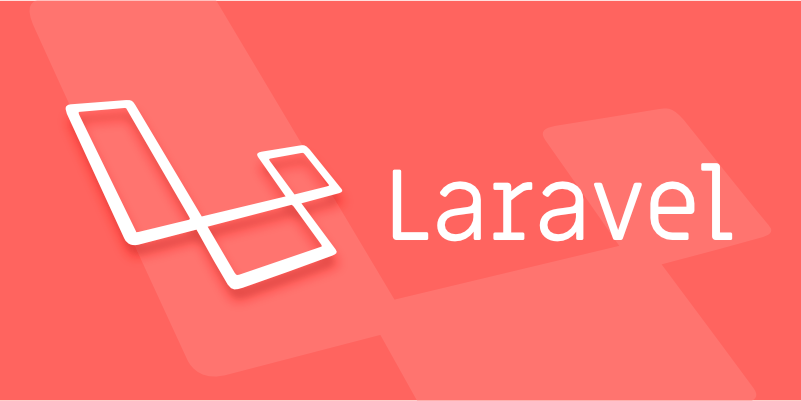The Laravel file storage system achieves multi-environment adaptation by configuring drivers, using Storage facades, and processing upload processes. 1. Configure the driver: Set disk types such as local, public, and s3 in config/filesystems.php, modify FILESYSTEM_DRIVER of .env, and create a soft link for the public disk. 2. Use Storage Facade: Provide put, get, exists, url, delete and other methods to operate files, and support seamless switching between local and cloud storage. 3. Process uploaded files: add enctype to the form, the controller obtains the file and saves it with the store or storeAs method, and saves the path to the database for call.

Laravel's file storage system is actually quite practical, especially easy to use and can adapt to local and cloud storage environments. The key is to understand several core concepts and operation processes, such as configuring drivers, using Storage facades, processing paths and URL generation, etc.

Configure your storage driver
Laravel supports multiple storage methods by default: local (local), public (publicly accessible local storage), s3 (Amazon S3), etc. These are all configured in the config/filesystems.php file.
- Modify the default driver : Set
FILESYSTEM_DRIVER=publicor your own configuration name in the.envfile. - Add a new disk : For example, if you want to connect to Alibaba Cloud OSS or Tencent Cloud COS, you can add a disk to this configuration file and fill in the corresponding access key, bucket and other information.
- Note the permissions : If it is a public disk, remember to run
php artisan storage:linkto create a soft link so that the front-end can access the uploaded file.
After the configuration is complete, you can start to upload and read files.

Use Storage Facade to manipulate files
Laravel provides a very concise API to manipulate files, which are basically encapsulated in Storage store.
Common operations include:

-
Storage::put('filename.txt', '內(nèi)容'): Write to the file -
Storage::get('filename.txt'): Read file contents -
Storage::exists('filename.txt'): determines whether the file exists -
Storage::url('filename.txt'): Get the file access address (for public disks) -
Storage::delete('filename.txt'): Delete the file
If you use cloud storage like S3, these methods are still applicable, but the underlying implementation is different. So you can easily switch the storage method without changing too much code.
Handle the actual scenario of uploading files
In web applications, the most common thing is that users upload avatars, pictures, PDFs and other files.
The processing steps are roughly like this:
- Make sure to have
enctype="multipart/form-data"in the form, otherwise the file will not be uploaded. - Get the uploaded file object in the controller via
request()->file('avatar'). - Use
store()orstoreAs()method to save the file:-
request()->file('avatar')->store('avatars'): Automatically name and save to the specified directory. -
request()->file('avatar')->storeAs('avatars', 'custom_name.jpg'): Custom file name.
-
- Return the storage path and save it to the database for easier subsequent calls.
For example, suppose you ask the user to upload avatar, you can write this:
if ($request->hasFile('avatar')) {
$path = $request->file('avatar')->store('avatar');
//Storing into database or other logic} If you want to be able to access it through the URL immediately after uploading, remember to use public disk or make soft links.
Basically that's it. The whole process is not complicated, but the details are easy to ignore, such as the configuration is not correct, the permissions are not opened, the URL is not generated, etc. Just check these places when you encounter problems.
The above is the detailed content of How to use Laravel's file storage system?. For more information, please follow other related articles on the PHP Chinese website!

Hot AI Tools

Undress AI Tool
Undress images for free

Undresser.AI Undress
AI-powered app for creating realistic nude photos

AI Clothes Remover
Online AI tool for removing clothes from photos.

Clothoff.io
AI clothes remover

Video Face Swap
Swap faces in any video effortlessly with our completely free AI face swap tool!

Hot Article

Hot Tools

Notepad++7.3.1
Easy-to-use and free code editor

SublimeText3 Chinese version
Chinese version, very easy to use

Zend Studio 13.0.1
Powerful PHP integrated development environment

Dreamweaver CS6
Visual web development tools

SublimeText3 Mac version
God-level code editing software (SublimeText3)
 Working with pivot tables in Laravel Many-to-Many relationships
Jul 07, 2025 am 01:06 AM
Working with pivot tables in Laravel Many-to-Many relationships
Jul 07, 2025 am 01:06 AM
ToworkeffectivelywithpivottablesinLaravel,firstaccesspivotdatausingwithPivot()orwithTimestamps(),thenupdateentrieswithupdateExistingPivot(),managerelationshipsviadetach()andsync(),andusecustompivotmodelswhenneeded.1.UsewithPivot()toincludespecificcol
 Sending different types of notifications with Laravel
Jul 06, 2025 am 12:52 AM
Sending different types of notifications with Laravel
Jul 06, 2025 am 12:52 AM
Laravelprovidesacleanandflexiblewaytosendnotificationsviamultiplechannelslikeemail,SMS,in-appalerts,andpushnotifications.Youdefinenotificationchannelsinthevia()methodofanotificationclass,andimplementspecificmethodsliketoMail(),toDatabase(),ortoVonage
 Understanding Dependency Injection in Laravel?
Jul 05, 2025 am 02:01 AM
Understanding Dependency Injection in Laravel?
Jul 05, 2025 am 02:01 AM
Dependency injection automatically handles class dependencies through service containers in Laravel without manual new objects. Its core is constructor injection and method injection, such as automatically passing in the Request instance in the controller. Laravel parses dependencies through type prompts and recursively creates the required objects. The binding interface and implementation can be used by the service provider to use the bind method, or singleton to bind a singleton. When using it, you need to ensure type prompts, avoid constructor complications, use context bindings with caution, and understand automatic parsing rules. Mastering these can improve code flexibility and maintenance.
 Strategies for optimizing Laravel application performance
Jul 09, 2025 am 03:00 AM
Strategies for optimizing Laravel application performance
Jul 09, 2025 am 03:00 AM
Laravel performance optimization can improve application efficiency through four core directions. 1. Use the cache mechanism to reduce duplicate queries, store infrequently changing data through Cache::remember() and other methods to reduce database access frequency; 2. Optimize database from the model to query statements, avoid N 1 queries, specifying field queries, adding indexes, paging processing and reading and writing separation, and reduce bottlenecks; 3. Use time-consuming operations such as email sending and file exporting to queue asynchronous processing, use Supervisor to manage workers and set up retry mechanisms; 4. Use middleware and service providers reasonably to avoid complex logic and unnecessary initialization code, and delay loading of services to improve startup efficiency.
 Managing database state for testing in Laravel
Jul 13, 2025 am 03:08 AM
Managing database state for testing in Laravel
Jul 13, 2025 am 03:08 AM
Methods to manage database state in Laravel tests include using RefreshDatabase, selective seeding of data, careful use of transactions, and manual cleaning if necessary. 1. Use RefreshDatabasetrait to automatically migrate the database structure to ensure that each test is based on a clean database; 2. Use specific seeds to fill the necessary data and generate dynamic data in combination with the model factory; 3. Use DatabaseTransactionstrait to roll back the test changes, but pay attention to its limitations; 4. Manually truncate the table or reseed the database when it cannot be automatically cleaned. These methods are flexibly selected according to the type of test and environment to ensure the reliability and efficiency of the test.
 Choosing between Laravel Sanctum and Passport for API authentication
Jul 14, 2025 am 02:35 AM
Choosing between Laravel Sanctum and Passport for API authentication
Jul 14, 2025 am 02:35 AM
LaravelSanctum is suitable for simple, lightweight API certifications such as SPA or mobile applications, while Passport is suitable for scenarios where full OAuth2 functionality is required. 1. Sanctum provides token-based authentication, suitable for first-party clients; 2. Passport supports complex processes such as authorization codes and client credentials, suitable for third-party developers to access; 3. Sanctum installation and configuration are simpler and maintenance costs are low; 4. Passport functions are comprehensive but configuration is complex, suitable for platforms that require fine permission control. When selecting, you should determine whether the OAuth2 feature is required based on the project requirements.
 Implementing Database Transactions in Laravel?
Jul 08, 2025 am 01:02 AM
Implementing Database Transactions in Laravel?
Jul 08, 2025 am 01:02 AM
Laravel simplifies database transaction processing with built-in support. 1. Use the DB::transaction() method to automatically commit or rollback operations to ensure data integrity; 2. Support nested transactions and implement them through savepoints, but it is usually recommended to use a single transaction wrapper to avoid complexity; 3. Provide manual control methods such as beginTransaction(), commit() and rollBack(), suitable for scenarios that require more flexible processing; 4. Best practices include keeping transactions short, only using them when necessary, testing failures, and recording rollback information. Rationally choosing transaction management methods can help improve application reliability and performance.
 Handling HTTP Requests and Responses in Laravel.
Jul 16, 2025 am 03:21 AM
Handling HTTP Requests and Responses in Laravel.
Jul 16, 2025 am 03:21 AM
The core of handling HTTP requests and responses in Laravel is to master the acquisition of request data, response return and file upload. 1. When receiving request data, you can inject the Request instance through type prompts and use input() or magic methods to obtain fields, and combine validate() or form request classes for verification; 2. Return response supports strings, views, JSON, responses with status codes and headers and redirect operations; 3. When processing file uploads, you need to use the file() method and store() to store files. Before uploading, you should verify the file type and size, and the storage path can be saved to the database.






